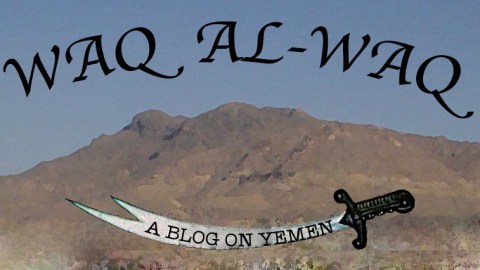Show me the money

This morning Noah Shachtman and Spencer Ackerman have a thought-provoking piece on US military involvement – yes, lets call it a war – in Yemen.
At the end of their piece the pair ask some thought-provoking questions. Basically: how does the US know when to stop bombing Yemen?
Here is their last paragraph:
“If this war is worth waging, it’s worth waging openly. And it’s worth having a strategy with a clearly defined, achievable goal. Does anyone know what that is in Yemen? Is it the end of al-Qaida in the Arabian Peninsula? The containment of AQAP? A functional Yemeni government that can fight AQAP without U.S. aid? We’ve gotten so used to fighting in the shadows for so long, we barely even ask our leadership what victory looks like.“
The entire piece is well-worth your time today, but what I want to focus on is the central thrust of Shachtman and Ackerman’s article and that is: “Outside of the classified arena, there’s little sense of what our Yemen operations cost, nor of what the costs would be if they were discontinued.“
It is, I believe, both good and fair question to ask what these almost constant airstrikes are costing.
And it reminded me of something I wanted to highlight from Christopher Swift’s interesting interview on his recent trip to Yemen.
Swift says:
“Al Qaeda fighters who are recruited are paid. And I have this from multiple sources, all of whom would be more than happy to sell one another up the river because they disagree with each other politically. They say that they get a car, rifle and $400 per month.”
This is fascinating and the first time I’ve heard a hard number – and a surprisingly high one at that – being thrown about. It also raises some very interesting questions. Such as where is AQAP getting this money?
If we take Swift’s estimate of 400 to 600 fighters in Abyan that is $160,000 to $240,000 a month just in salary expenditures. That seems incredibly hight to me, particularly for a group that had borrow half of the $5,000 it cost to carry out the Christmas Day 2009 underwear bomb attempt.
If we take Brennan’s estimate of 1,000 fighters across the country, this monthly expenditure balloons to $400,000.
There are I think two separate questions here. 1. Are these figures accurate? 2. Where is AQAP getting what money it does have?
On the first, as I suggested above, 400 a month seems high, but I have no real way to confirm that.
On the second, it is clear that AQAP has more money now than it had in 2009, 2010 or 2011, some of which has likely come from bank truck robberies, ransoms on kidnap victims, loot and cash taken from the Yemeni military as well as fundraising outside of Yemen.
But how much money do these various streams produce? And, are other sources of income that AQAP has at the moment?
In the end, we are, as usual, left with more questions than answers. When it comes to money it is far from clear how both the US and AQAP are funding this war.





